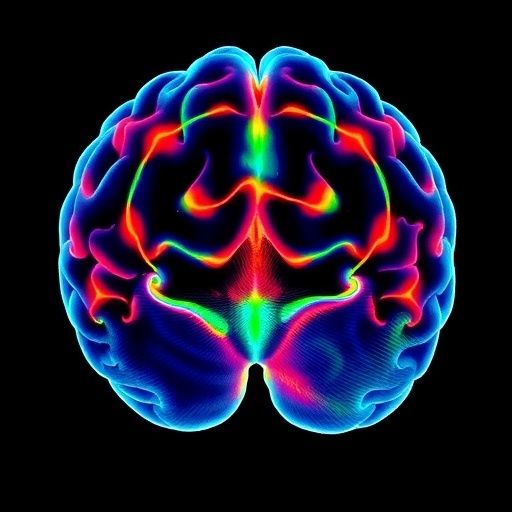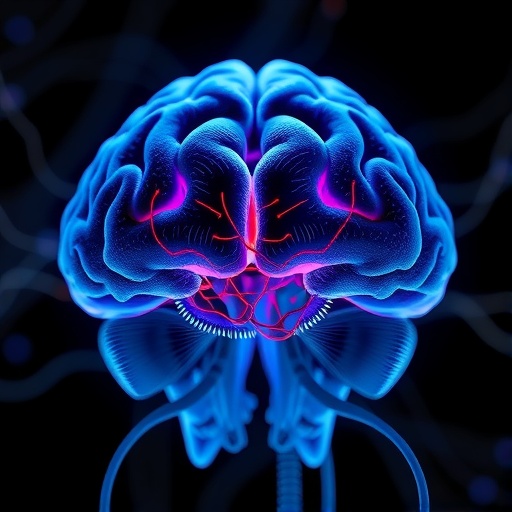In the quest to unravel the intricate neural choreography underlying memory formation, a groundbreaking study published in Nature Neuroscience in 2025 by Taxidis et al. leverages cutting-edge voltage imaging techniques to illuminate the dynamic role of inhibitory interneurons within the hippocampus. For decades, neuroscientists have emphasized the pivotal contributions of excitatory pyramidal neurons as the primary substrates for encoding memories. However, the complex orchestration of these neurons’ activity has always suggested a crucial, yet underappreciated, role for inhibition in sculpting the precision and fidelity of memory traces. The meticulous work by Taxidis and colleagues now provides unprecedented direct visualization of inhibitory dynamics during behaviorally relevant memory encoding sequences, heralding a paradigm shift in how we conceive neural circuit function during cognition.
The hippocampus, a well-established nexus of spatial navigation and episodic memory, relies on highly structured temporal patterns of neuronal activity. Place cells, a subset of pyramidal neurons, fire in sequences that correspond with traversed environments, forming “neural maps” that encode spatial memories. Despite significant advances in electrophysiological recordings and calcium imaging, capturing the fast inhibitory synaptic events that tightly regulate these sequences remained elusive. This gap largely owes to the technical challenges in monitoring sub-millisecond changes in membrane voltage across distinct cell types in vivo. Taxidis et al. overcome these hurdles by deploying an advanced genetically encoded voltage indicator, affording millisecond-resolution imaging of both excitatory pyramidal neurons and a diverse spectrum of inhibitory interneurons during active behavior.
Their findings reveal a highly choreographed interplay between firing patterns of inhibitory neurons and pyramidal cells within the CA1 subregion of the hippocampus. The inhibitory interneurons do not merely impose a blanket suppression but instead shape precise windows of pyramidal neuron excitability. By unveiling how distinct interneuron subtypes sequentially tighten and release inhibitory control, the study elucidates a nuanced temporal gating mechanism—effectively enabling the reliable propagation of specific pyramidal sequences that encode memory episodes. This inhibitory modulation ensures that competing, potentially conflicting neuronal representations are suppressed, enhancing the fidelity of mnemonic encoding and downstream recall.
.adsslot_4wdn7FJ2bG{ width:728px !important; height:90px !important; }
@media (max-width:1199px) { .adsslot_4wdn7FJ2bG{ width:468px !important; height:60px !important; } }
@media (max-width:767px) { .adsslot_4wdn7FJ2bG{ width:320px !important; height:50px !important; } }
ADVERTISEMENT
What sets this study apart is the simultaneous in vivo imaging of voltage signals from both pyramidal neurons and genetically defined inhibitory interneurons in awake, behaving mice navigating virtual environments. This experimental design allowed the researchers to correlate specific inhibitory neuron firing patterns directly with the timing and content of pyramidal memory sequences. Complementing their imaging data with optogenetic perturbations, they demonstrated that transient silencing or activation of interneurons disrupts the normal progression of pyramidal sequences, confirming the causal influence of inhibition on hippocampal memory encoding dynamics. Thus, the data provide compelling evidence that inhibitory circuits do more than fine-tune excitatory firing rates—they sculpt the very temporal architecture of memory-relevant sequences.
Another cornerstone of the research is the identification of distinct inhibitory components corresponding to different stages of the memory encoding cycle. For instance, parvalbumin-expressing basket cells create transient inhibitory “windows” that precisely phase-lock pyramidal firing during movement through a spatial environment. Meanwhile, somatostatin-expressing dendrite-targeting interneurons modulate pyramidal output in later phases, preventing spurious activation and noise interference. This division of labor among interneuron subtypes underscores a layered inhibitory scaffold that dynamically modulates pyramidal cell participation in memory traces depending on behavioral context.
Moreover, the exquisite temporal resolution achieved by voltage imaging exposed previously unseen oscillatory interactions between excitatory and inhibitory neurons that facilitate sequence progression. These oscillations likely support the rhythmic timing required for synaptic plasticity mechanisms foundational to memory consolidation, such as spike-timing-dependent plasticity. By linking inhibitory dynamics directly to these oscillatory patterns, the study extends our mechanistic understanding of how temporal precision in hippocampal circuits arises from a complex balance of excitation and inhibition.
The implications of these findings transcend the hippocampus: they invite a reassessment of inhibitory neuron function in other cortical and subcortical memory circuits. Memory disorders such as Alzheimer’s disease often involve early disruptions to inhibitory interneurons, and the detailed elucidation of their role in sequence shaping may provide novel therapeutic targets. Furthermore, the study’s voltage imaging methodology sets a new technical benchmark for dissecting cellular interactions in neural networks, offering a generalizable tool for studying fast, subthreshold events in vivo across various brain regions.
What truly makes Taxidis and colleagues’ work viral-worthy is how it redefines a century-old dogma: that inhibition in the brain is merely a subtractive force dampening excitation. Instead, inhibition emerges from their precise, millisecond-scale measurements as an active and constructive sculptor of neural code, dictating when and which pyramidal neurons join the ensemble encoding a memory. This revelation has profound consequences for conceptual models of learning and memory, which have traditionally underweighted the computational power of inhibition within cortical circuits.
In exploring the hippocampal inhibitory landscape with unprecedented clarity, the authors also open the door to a multitude of exciting future directions. Questions abound regarding how neuromodulatory states, such as attention or stress, alter inhibitory gating and sequence fidelity. Equally compelling is the prospect of investigating how pathological alterations in inhibitory interneurons—common in epilepsy and schizophrenia—influence memory-related sequence disruptions. The convergence of genetic tools, voltage imaging, and behavioral paradigms demonstrated here equips neuroscientists with an arsenal to address these pressing questions at a hitherto impossible resolution.
Another transformative aspect of this work lies in the integration of computational modeling to interpret how observed inhibitory patterns translate into network-level dynamics supporting memory. By bridging experimental data with sophisticated simulations, the authors unravel how a delicate balance and timing of excitation and inhibition yield robust, reproducible sequences that encode experience. This bridge between experimental neurophysiology and theoretical neuroscience strengthens the conceptual frameworks surrounding memory formation and storage.
Beyond the immediate implications for hippocampal research, the techniques and insights offered by this study herald exciting possibilities for brain-machine interfaces and neural prosthetics. By decoding the inhibitory timing rules that govern precise neural sequence activation, engineers could design next-generation devices that restore memory function or enhance cognitive processing with finer granularity than ever before. Such translational potential adds an impactful dimension to the fundamental neuroscience advances presented.
The elegance of Taxidis et al.’s approach also lies in its capacity to examine naturally behaving animals during cognitive tasks, maintaining ecological validity while harnessing cutting-edge imaging. The harmonious fusion of biological realism with technical innovation emboldens efforts to link cellular neurodynamics directly to complex behaviors such as learning, decision-making, and navigation. This methodological leap forward bridges microcircuit biology with systems neuroscience and cognitive science.
In conclusion, the pioneering voltage imaging study of hippocampal inhibitory dynamics by Taxidis and colleagues dramatically transforms our understanding of how memory-encoding sequences are orchestrated. By revealing the temporally precise roles of distinct interneurons in sculpting pyramidal neuron activity, the research uncovers fundamental principles of neural computation underlying cognition. This work heralds a new era in neuroscience where inhibition is appreciated not as a mere brake but as an active conductor guiding the neural symphony of memory.
Their findings resonate powerfully within the broader quest to decipher the biological basis of intelligence and hold promise to illuminate the pathologies of memory disorders. As we peer further into the brain’s electrical symphony, the nuanced dance between excitation and inhibition continues to reveal its centrality in the enigmatic processes that constitute learning, memory, and ultimately, the essence of human experience.
Subject of Research:
Hippocampal inhibitory dynamics and their role in shaping pyramidal neuron sequences during memory encoding.
Article Title:
Voltage imaging reveals hippocampal inhibitory dynamics shaping pyramidal memory-encoding sequences.
Article References:
Taxidis, J., Madruga, B., Safaryan, K. et al. Voltage imaging reveals hippocampal inhibitory dynamics shaping pyramidal memory-encoding sequences. Nat Neurosci (2025). https://doi.org/10.1038/s41593-025-02016-y
Image Credits: AI Generated
Tags: direct visualization of neural circuitsexcitatory pyramidal neurons rolefast inhibitory synaptic eventshippocampal memory encodinginhibitory interneurons dynamicsmemory trace precision and fidelityneural choreography and cognitionneurophysiological challenges in imagingparadigm shift in neurosciencespatial navigation and episodic memorytemporal patterns of neuronal activityvoltage imaging techniques





